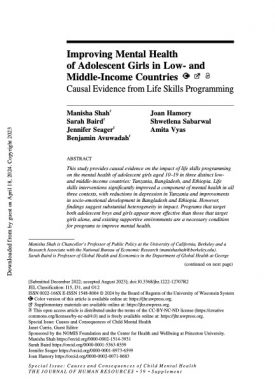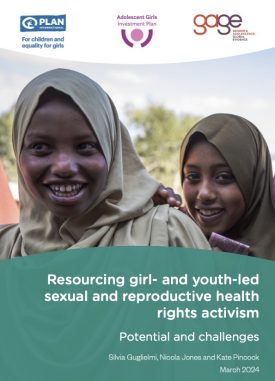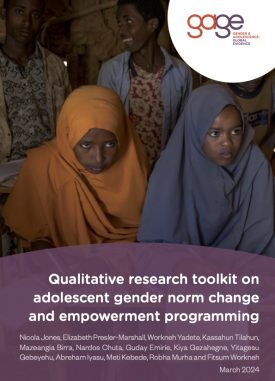More than 1.39 million people were newly displaced in Ethiopia in late 2017 and 2018 – more than anywhere else globally during the same period and bringing the total number of internally displaced people in the country to 2.9 million (IDMC 2019). Many were displaced along the Oromia and Somali regional border, where tensions over resources are thought to have contributed to a sudden escalation of ethnic violence. Since the violence began, however, there has been a major political transformation aimed at overcoming historic divides, spearheaded by new Prime Minister Abiy Ahmed, and a newly created Ministry of Peace is mandated to support internally displaced persons (IDPs).
This chapter draws on findings from data collected in late 2017/early 2018 and late 2019 to explore the intersecting vulnerabilities of internally displaced adolescents in Ethiopia, focusing on economic and psychosocial vulnerabilities and gender similarities and differences. In contrast to refugee populations, our findings suggest that IDPs fall between the cracks of the development–humanitarian nexus. As IDPs are hosted in already vulnerable communities, our two rounds of data collection (during the initial displacement and a year later) highlight that social cohesion between IDPs and host communities has quickly fractured. Beyond initial humanitarian responses, greater attention to age- and gender-responsive social protection for IDPs is needed across rural, camp and host community settings.
Suggested citation:
Jones, N., Pincock, K. and Yadete, W. (2021) ‘“We Are Not Accepted Here”: Intersecting vulnerabilities of Internally Displaced Adolescents in Ethiopia.’ in Jones, N., Pincock, K. and Abu Hamad, B. (eds.) Adolescents in Humanitarian Crisis. Displacement, Gender and Social Inequalities. Oxford: Routledge (https://doi.org/10.4324/9781003167013)


